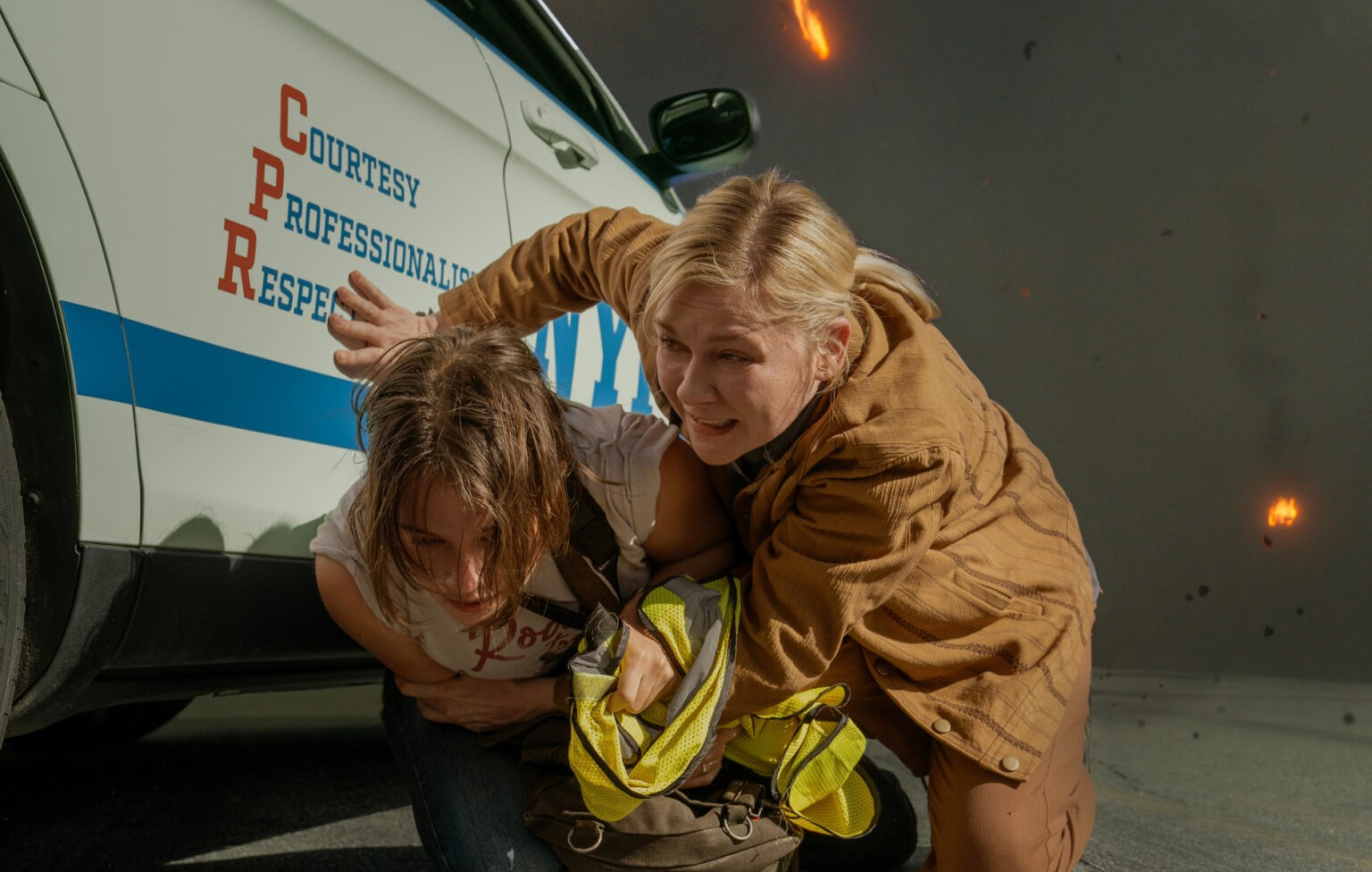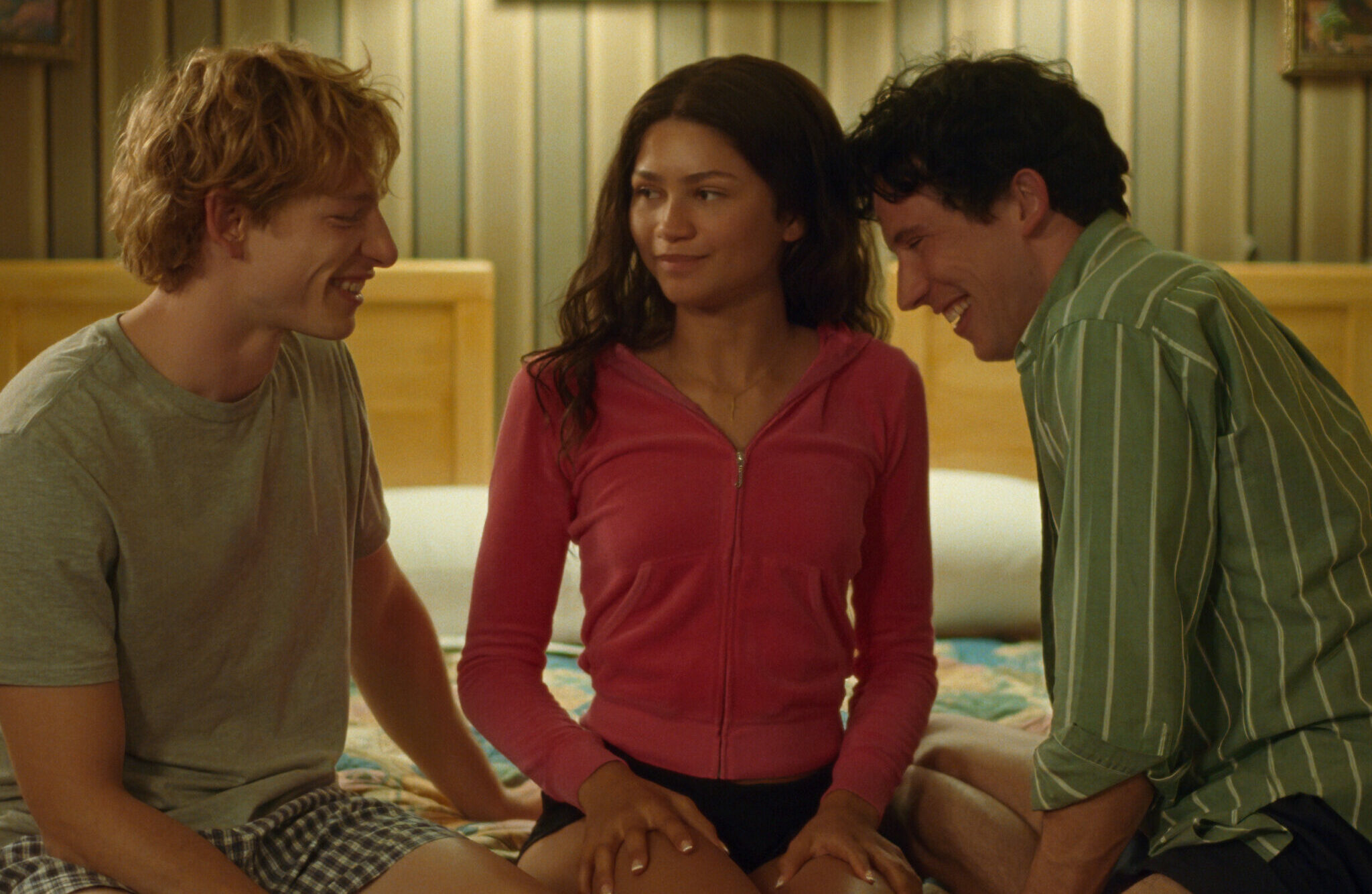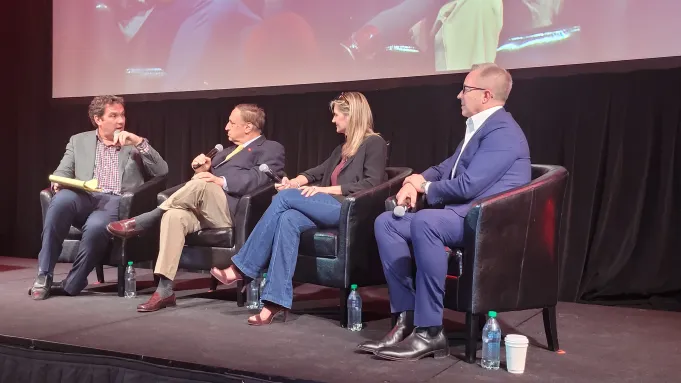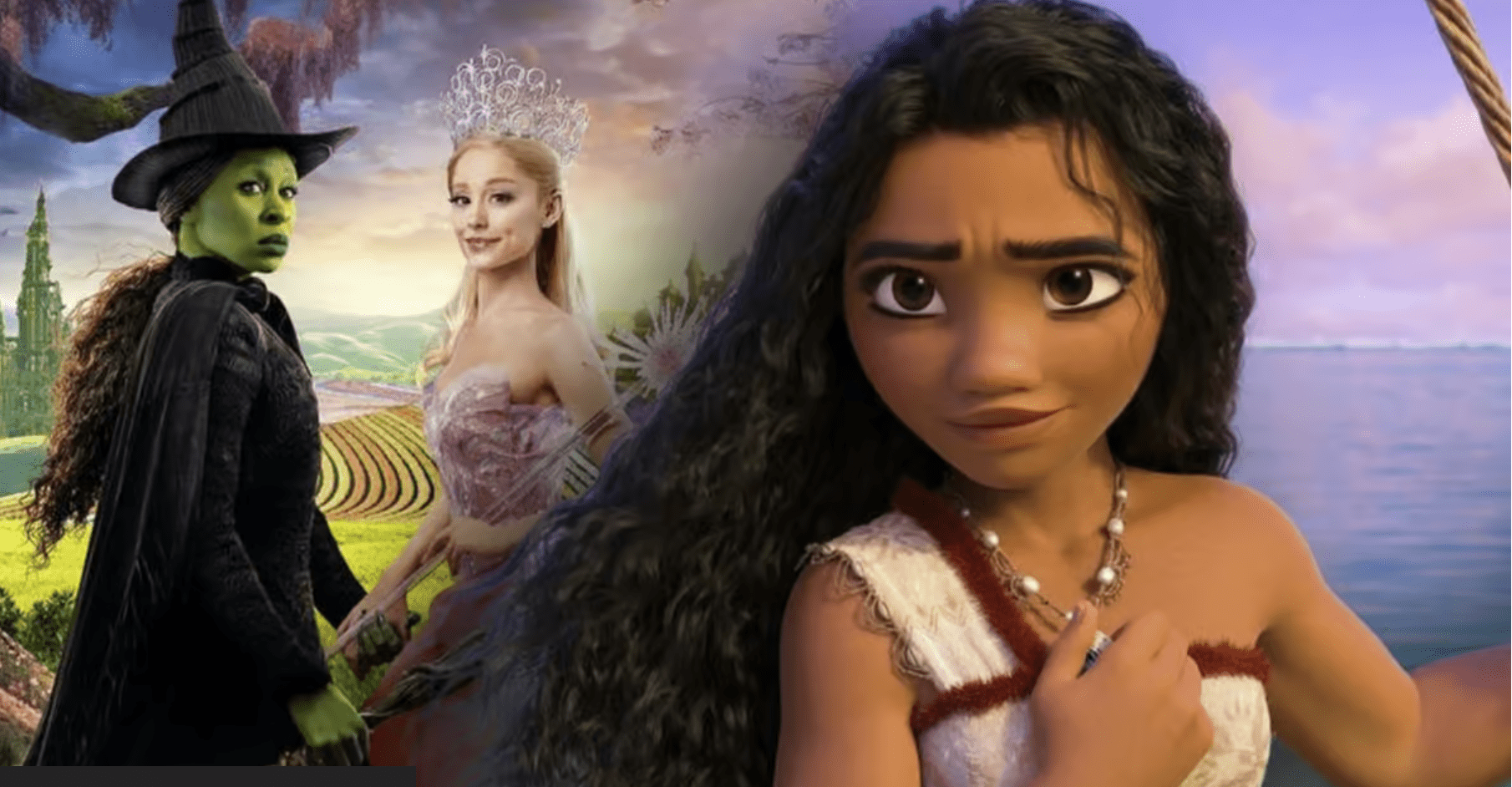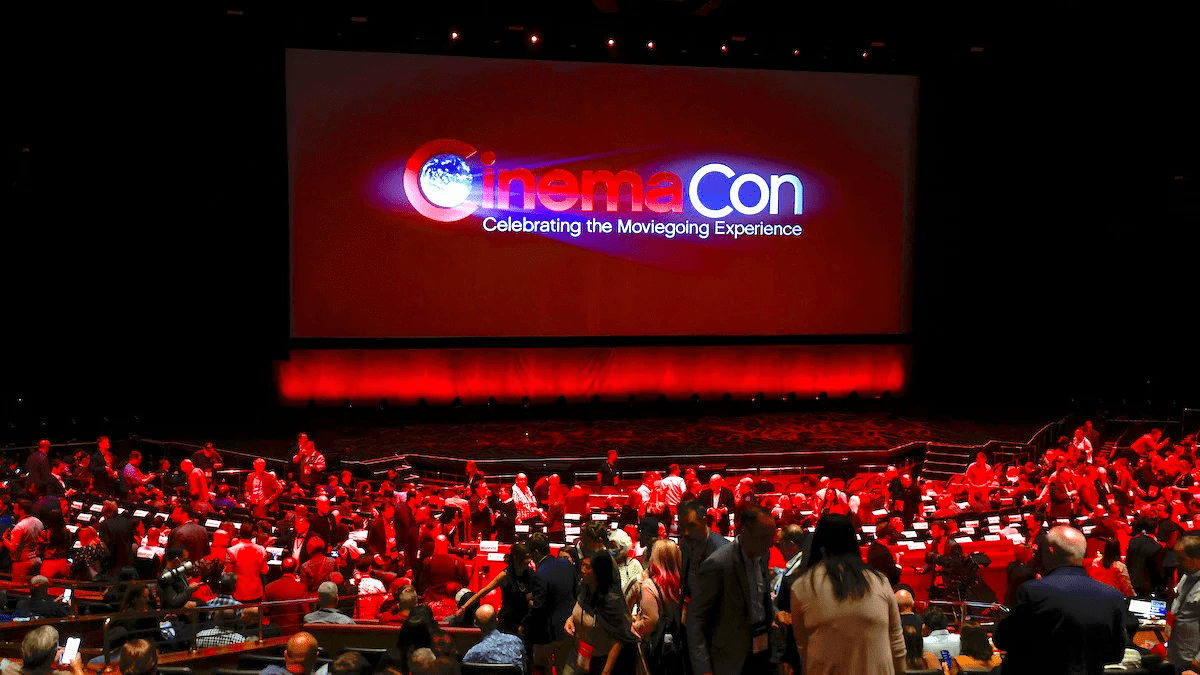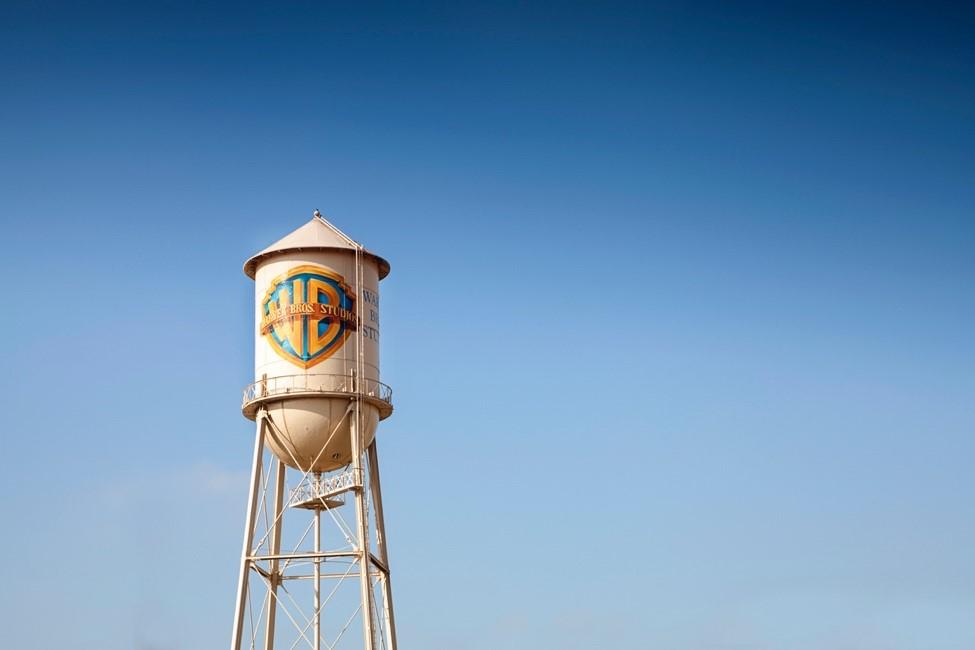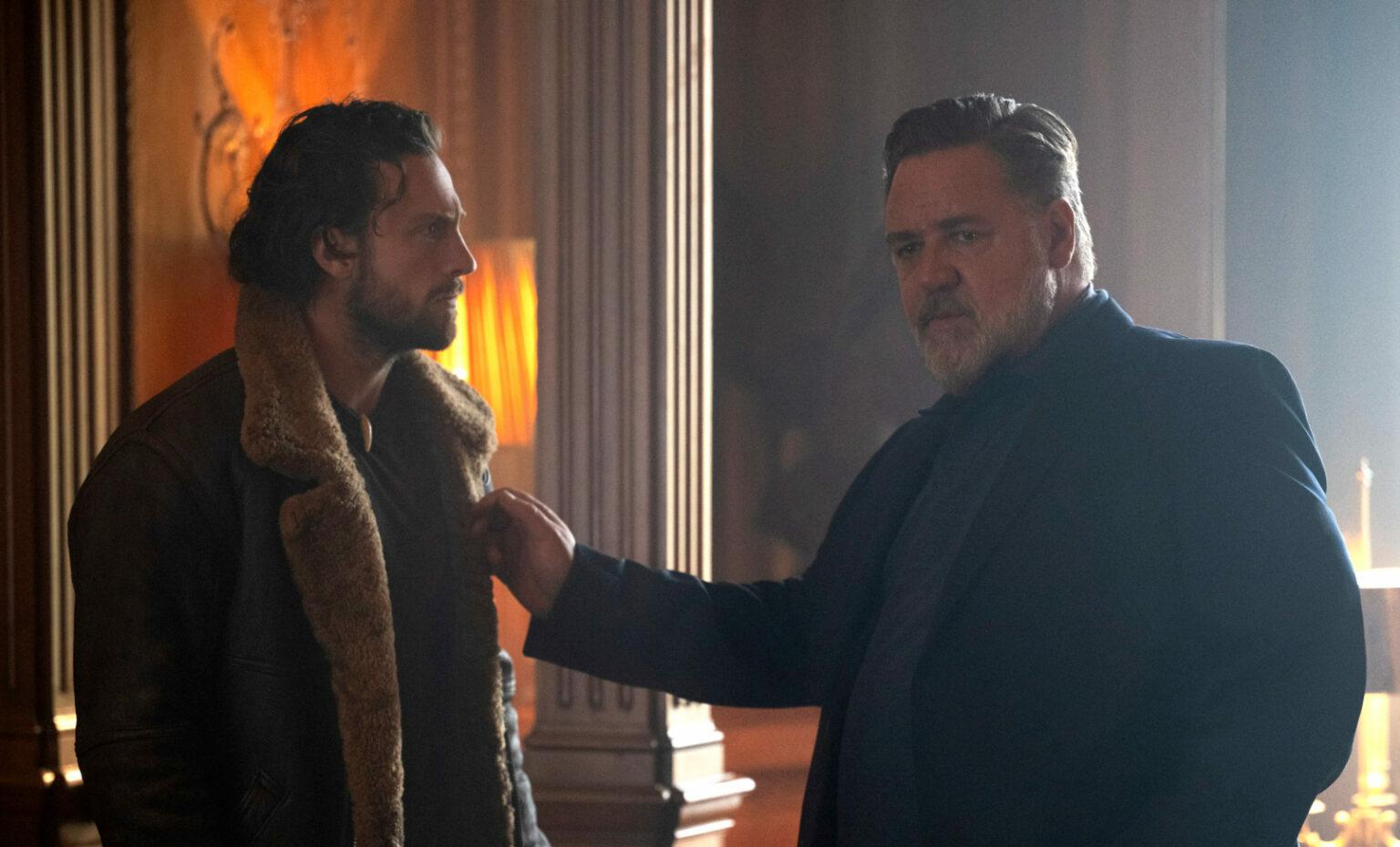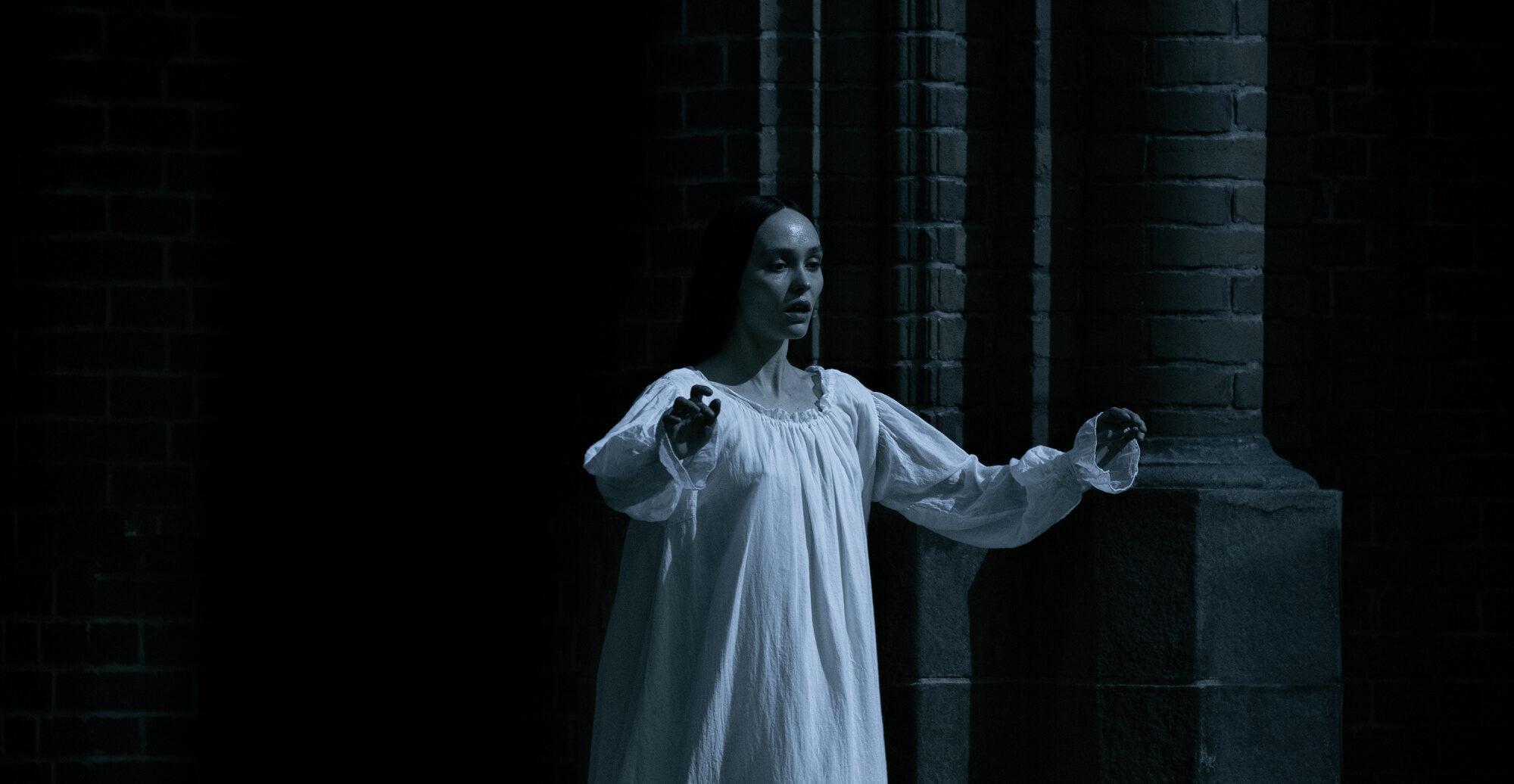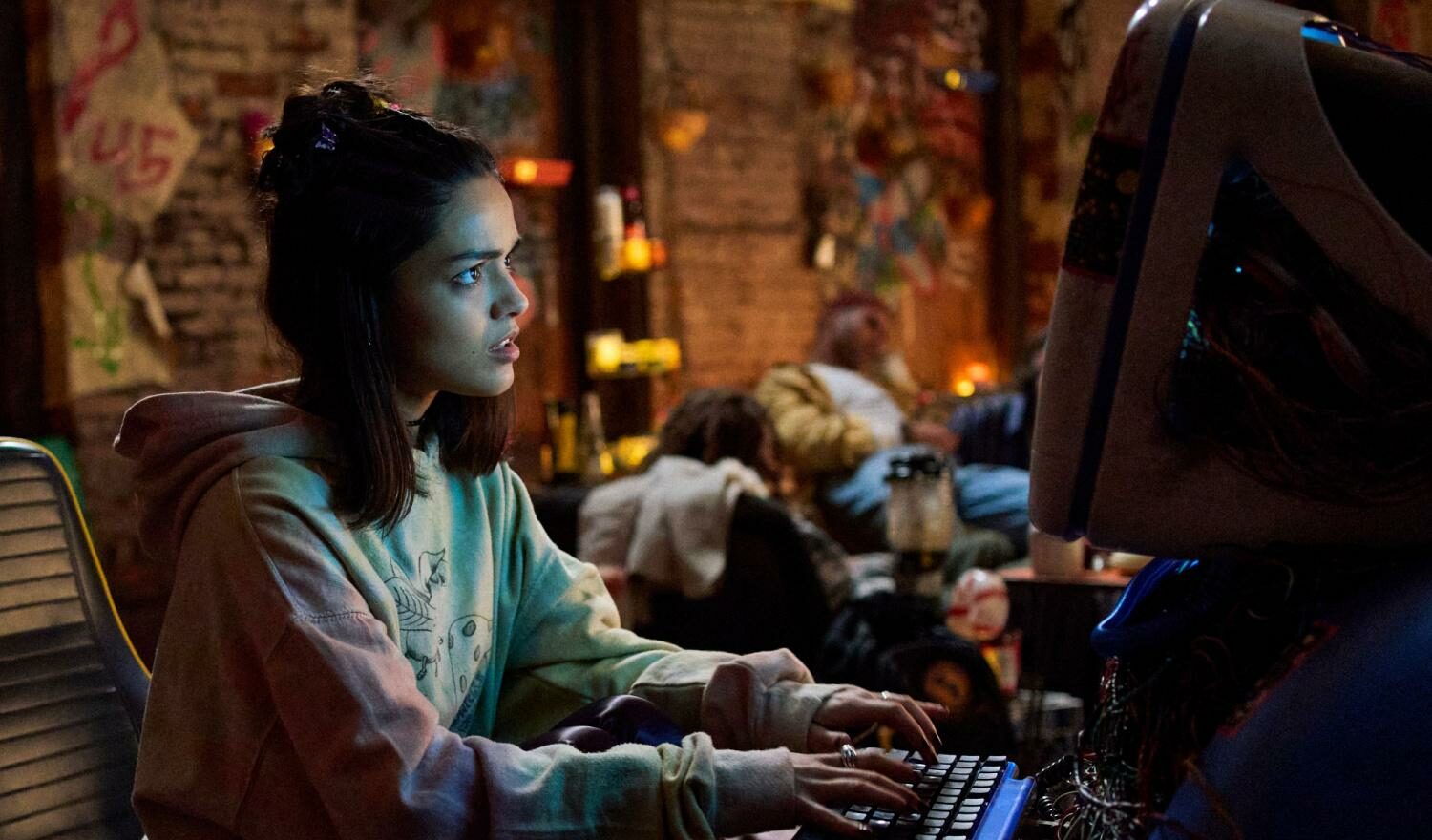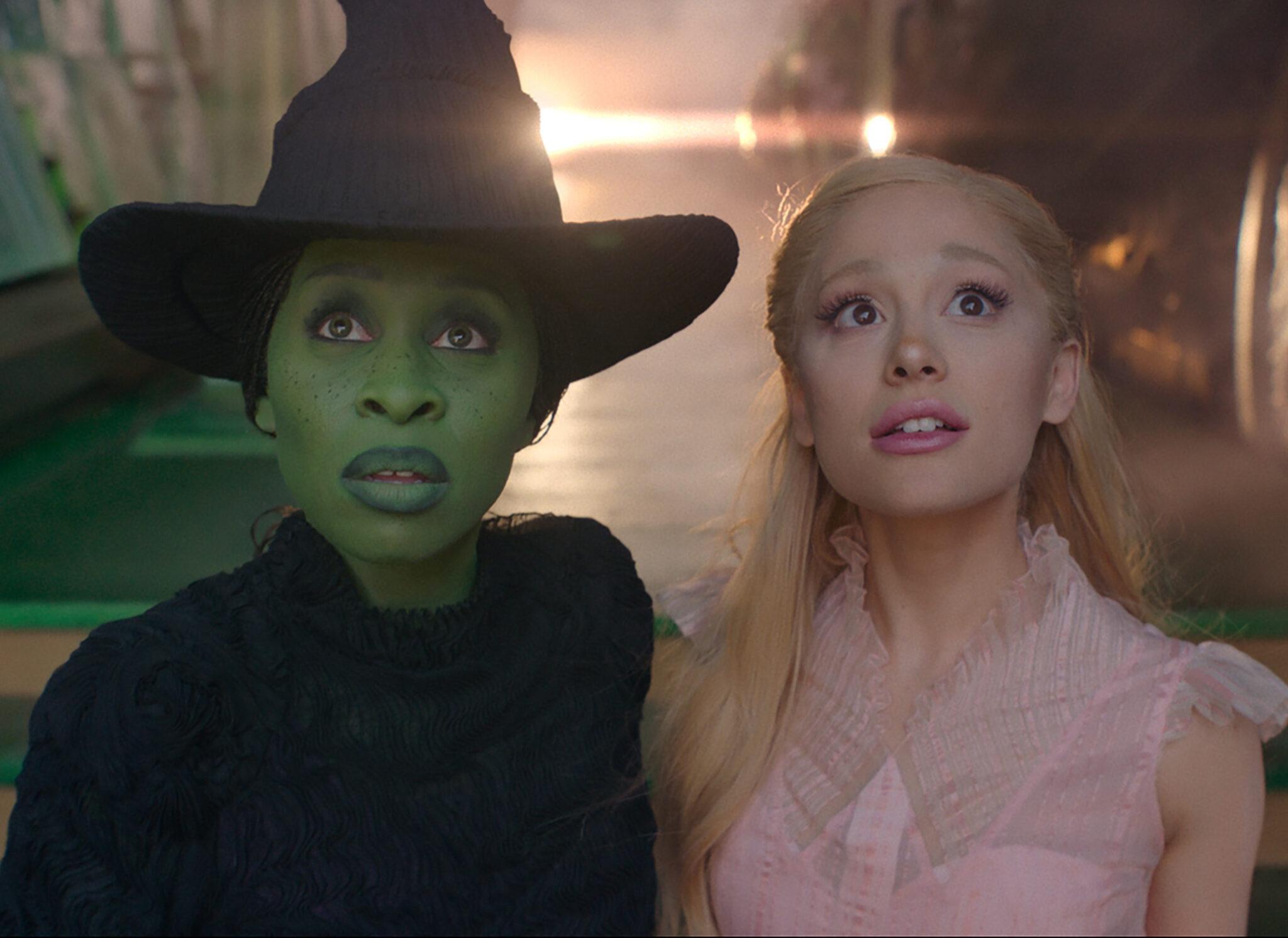VERDICT: Alex Garland can mount a battle sequence as well as any filmmaker working today, but the lack of political context and specificity undermines this ambitious film.
The wide-eyed greenhorn marches blithely into the crucible of war and learns some hard life lessons. The seen-it-all veteran, haunted by the past, finds redemption in becoming the newcomer’s mentor. This scenario has been a war-movie staple going at least as far back as 1930’s All Quiet on the Western Front, and writer-director Alex Garland revives it for the rousing but safe Civil War, with young, would-be photojournalist Jessie (Cailee Spaeny, Priscilla) being taken under the wing of seasoned pro-Lee (Kirsten Dunst).
While their relationship and personal arcs are powerfully portrayed, albeit familiar, it’s in the titular war where Garland’s ambitious new movie falls apart. Set in an unspecified future year, the film presents the United States as a collection of war zones, with the Western Forces of Texas and California seceding from the Union and setting their sights on deposing the never-named POTUS (Nick Offerman), a third-termer whose crimes include disbanding the FBI and calling air strikes on US civilians.
Jessie tags along with Lee, gung-ho journalist Joel (Wagner Moura, The Gray Man), and retirement-facing longtime New York Times reporter Sammy (Stephen McKinley Henderson, Beau Is Afraid) as they take a circuitous route from Manhattan — where riots are breaking out over access to water — to Washington, D.C., where they expect the embattled, never-named President will be surrendering to the Western Forces any day now.
Along the way, they encounter a variety of wartime scenarios, from a firefight between soldiers and civilian combatants (dressed like golf dads); snipers fending off unseen assailants in an eerie, Christmas-themed mini-golf course; a weirdly placid suburb seemingly untouched by the conflict; and a horrifying mass grave being tended by an emotionless but trigger-happy sociopath (Jesse Plemons in a memorable cameo).
Garland is a master of mood and tension, crafting a slow boil that never allows the characters (and the audience) to relax completely since the prospect of sudden violence or horror lies around every corner. And once the intrepid team makes it to D.C., the scenes of urban combat taking place around national landmarks are both thrilling and nauseating, inescapably summoning events of recent history.
But that’s about as close as Civil War gets to conveying the mood and the conflicts of the USA in 2024. We know that the President is a despot, but the movie remains coy about the politics and the motivations of each side of this conflict. Garland de-politicizes the combatants, perhaps to make the film accessible to audiences of all ideological stripes, but the effect is a narrative vacuum: if we don’t have at least a vague idea of what each side stands for, or at least a sense of the rhetoric and posturing that has led the country to all-out cataclysm, the film’s message is reduced to “war sure does suck.”
The United States is currently in a near-unparalleled state of internal division and rancor, and to make a movie called Civil War that doesn’t even attempt to wade into that division except in the broadest, most external way feels like an act of aesthetic cowardice, or at least calculation.
For their part, Spaeny and Dunst are riveting, earning attention even as the movie dithers on its fundamental premise, with both playing characters far afield from their earlier work: Spaeny’s Jessie couldn’t be more different than the sheltered, medicated Priscilla Presley she so brilliantly brought to life in last year’s biopic, and Dunst has reached a point in her career where she gets to leave the role of the ingenue far behind, instead inhabiting the skin and soul of the experienced journeyman, haunted by nightmarish visions of war zones past (which Garland shows us in lurid detail).
Moura and Henderson — it’s a thrill to see the latter in a movie that keeps him around for more than just a scene or two — are given less screen time but each has a moment to make a lasting impression as they respond to the horrors around them. The cavalier exterior of Moura’s Joel gives way to utter horror when the carnage hits him close to home; Henderson’s Sammy is mostly called upon as a font of wisdom, but his eyes communicate that it’s wisdom hard-won throughout a lengthy career in the field.
The film’s production-design team shrewdly uses the contemporary state of things to its benefit. A New York City packed with refugee tent-cities feels both alarming and familiar, calling to mind films like Lizzie Borden’s Born in Flames and Godard’s Alphaville, which used the status of urban streets in their moments to create, respectively, apocalyptic devastation and a gleaming, sterile future. It’s one of the few ways in which the movie directly addresses current instabilities rather than couch them in vague pronouncements.
Art allows the audience to process anxieties of the moment, whether as directly as Russell T. Davies’ recent here-comes-doom miniseries Years and Years or as indirectly as the 1970s disaster movie genre, which provided catharsis for a country processing the aftermath of Watergate and Vietnam. Civil War ultimately risks nothing and subsequently says nothing; it’s a thrilling war picture cosplaying as an examination of the zeitgeist.

